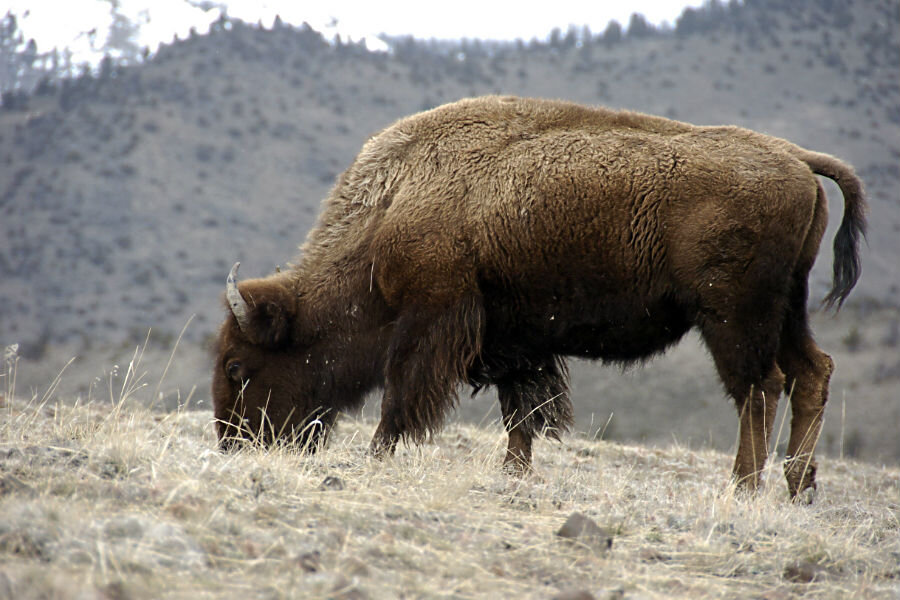Don't pet the Yellowstone bison, or put them in your car
Loading...
| Helena, Mont.
A bison calf that tourists loaded into their vehicle at Yellowstone National Park because they were concerned for its welfare has spurred warnings to avoid wildlife after the animal had to be put down.
The incident this past week and several other recent cases have led park officials to urge people to stay at least 25 yards from all wildlife and 100 yards from bears and wolves.
Visitors brought the newborn calf to a park facility, but rangers weren't able to reunite it with its herd. After repeated attempts to reunite it with the herd, the animal was euthanized because it kept approaching people and cars along the road.
In recent video that spread online, a woman was pictured trying to pet an adult bison. In another, tourists posed for photos dangerously close to bison.
Five park visitors were seriously injured last year after getting too close to the massive animals. During the past 15 years, the park service reports that "bison injured 25 individuals, with the 5 injured people in 2015 being the greatest number in one year. Researchers classified these injuries as butting (hitting person with head), goring (puncturing body with horn), or tossing (throwing person into the air). Goring is the most severe injury. Of the 25 hurt individuals, 22 required medical treatment, and 12 of them were hospitalized. There were no deaths.
Most of the injuries caused by bison encounters are preventable. The majority (80%) of people hurt by bison in Yellowstone actively approached the bison leading up to the event despite the regulations to stay 25 yards away to protect both people and wildlife."
As The Christian Science Monitor reported last summer, the National Park Service implored park visitors to stop taking selfies with the wildlife.
The notice details an incident involving a mother who was injured by bison at Yellowstone National Park Tuesday after she and her daughter turned their backs on one of the animals to take a picture. The attack makes the woman the fifth person injured in an encounter with bison this summer – and the latest in a growing list of people around the world who have been hurt or killed for the sake of a good selfie.
“The woman and her daughter were by the trailhead sign when they decided to take a picture with a bison that was approximately 6 yards away from them near the trail,” the NPS notice reads. Park regulations instruct visitors to stay at least 25 yards away from all large animals.
Earlier this month, the bison became the official national mammal.
The North American bison is a towering, shaggy beast that has roamed our continent for thousands of years. Many people have suggested that the largest American land mammal and icon of the country's cultural history and conservation deserves to be canonized as America's national symbol.
"Its place in American history is unrivaled among species," says the Vote Bison Coalition, a group of rural communities, native American tribes, ranchers, wildlife conservationists, and other fans driving the the effort to elevate bison's national prominence.
"Bison today symbolize American values of unity, resilience and healthy landscapes and people," the coalition says on its website.







